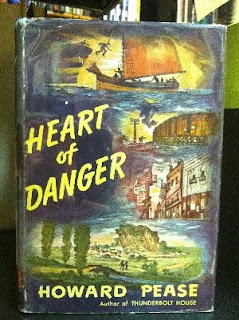The recipe for Lobster à l'United States in The Captain's Table : 18 recipes for famous dishes served aboard the S.S. United States and S.S. America is preceded by a portrait of a happy couple with the following caption:
'Months after a recent trip abroad, we were still savoring the memory of Lobster à l'United States served on board the S.S. United States. On our next crossing, we asked the Maitre d' for the recipe. Here it is--just the way M. de la Motte wrote it out for us.' Colonel and Mrs. Leon Mandel, well-known Chicago financier and woman's world shotgun champion, respectively, have made 20 crossings on United States Lines.
Here is that recipe:Lobster à l'United States
Crack the claws and cut the tails of two 1-1/2 pound live lobsters into thick slices. Reserve the rest of the lobsters for another use. In a flame-proof casserole sauté 1 carrot, 1 leek, 1 stalk of celery and 2 shallots, all finely chopped in 2 tablespoons clarified butter for 7 to 8 minutes. Stir in the lobster pieces and add grated lemon rind, paprika, cayenne and salt to taste. Cover the casserole and bake the mixture in a very hot oven (450° F) for 8 to 10 minutes. Remove the casserole from the oven and put it over high heat to reduce the remaining liquid. Pour 3 tablespoons heated brandy over the lobster and ignite the spirit. When the flames die dust the lobster with 3 tablespoons flour and stir in 1 tablespoon tomato paste. Add 4 cups chicken stock, bring it to a boil, and cook the mixture, covered, over very low heat for 5 minutes, stirring occasionally. Stir in 1/2 cup heated heavy cream. Remove the casserole from the heat and sprinkle it with chopped truffles and fines herbes. Stir 1/4 cup sherry and serve the lobster with saffron rissoto (rice) or croutons. Serves 4.
And you can see the March 2, 1954 menu from the S.S. United States when this dish was served, along with kangaroo tail soup, at the New York Public Library's What's on the Menu collection.
Mirrored from Full Fathom Five, due to its lack of rss feed & functioning commenting.

